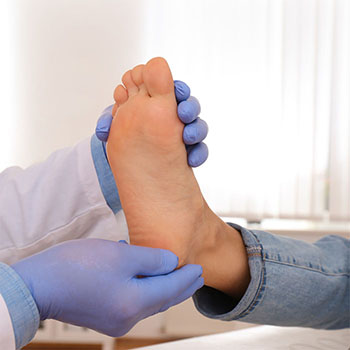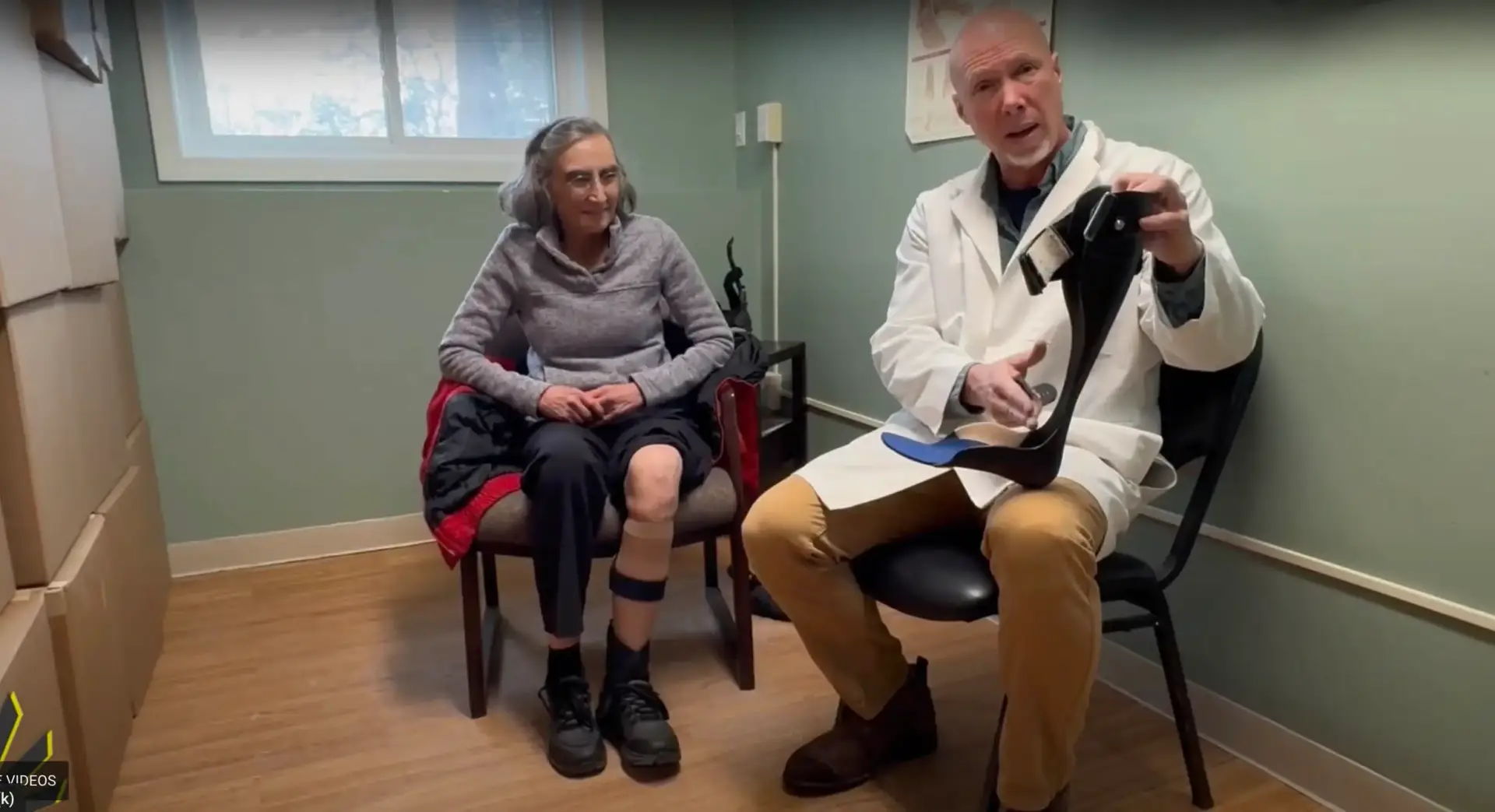Elaine Compares Her Carbon Fiber Brace with Step-Smart Brace for Drop Foot
Hi, it’s Ian, I’m with Elaine. Elaine comes
It has been estimated that as many as 20% of stroke survivors may experience drop foot (also known as foot drop).
Drop foot involves difficulty lifting the front portion of the foot, a movement known as dorsiflexion. Sometimes it’s combined with a plantar flexion spasticity. This condition can cause the foot to “drop” or drag when an individual is walking.
 Typically, when individuals walk, the brain sends messages to various muscles to keep the toes from dragging on the ground. When the communication between the brain and the muscles is disrupted, such as after a stroke or brain injury, drop foot can occur.
Typically, when individuals walk, the brain sends messages to various muscles to keep the toes from dragging on the ground. When the communication between the brain and the muscles is disrupted, such as after a stroke or brain injury, drop foot can occur.
The inability to effectively lift the foot off the ground can be a significant safety concern. When the toes drag, it is easy to trip over items on the ground, such as a rug or crack in the sidewalk. Falling forward results.
Furthermore, many individuals with drop foot also experience numbness in the affected foot. This means they may be unable to feel small changes when walking on uneven surfaces, increasing the possibility of a fall.
Because this can make it difficult to walk and safely navigate around, therapists often recommend using an ankle-foot orthotic (an AFO brace) for drop foot.
Rather than letting their toes drag, some individuals with drop foot choose to swing their affected leg out to the side with each step to avoid dragging their toes. Others choose to lift their leg up high, like they are marching, to allow their foot to clear the ground. These are called gait deviations and are unattractive.
Moreover, these different walking patterns do not address the actual root cause of drop foot, nor are they likely to promote recovery. On the other hand, they are likely to cause further complications, such as chronic pain and faster rates of fatigue. Not to mention that it looks bad.
This is why doctors and therapists frequently suggest wearing an AFO brace for drop foot. AFO braces support the ankle, keeping the foot up rather than allowing it to drag.
This increases your safety when walking and helps prevent the development of abnormal gait patterns. In turn, those who use a drop foot brace are able to move around more safely, cosmetically and easily.
Your doctor or physical therapist is the best resource for choosing the perfect AFO. After all, every individual is different, which means that everyone will benefit from different types of drop foot braces.
In order to have a productive conversation with your therapist, it helps to be aware of the various characteristics that are available in AFO braces.
Here are some factors that should be considered when purchasing an AFO brace for drop foot:
• Rigid or soft. Rigid braces are more supportive, while softer braces are more comfortable and less likely to cause skin integrity issues. We don’t know of a soft brace that works well.
• Hinged or solid. Hinged braces allow individuals to continue using their ankle muscles, while solid braces fully support the foot and ankle and may result in ankle contractures (severe spasticity) when used for long periods of time. It also causes other gait deviations in stance phase.
• Custom-made or prefabricated. While custom-made options are personalized and adapted to your specific needs and body structure, prefabricated options may be more appropriate and just as or often more effective.
• Easily concealed or outwardly visible. Although this is not the most practical consideration, some individuals may feel strongly that they want their AFO brace to be as discreet as possible.
• Cost-effective or more expensive. Costs of AFOs vary greatly depending on your insurance coverage and the type of AFO needed. Spending more doesn’t always provide a better outcome.
Keeping these factors in mind, we designed our line of Step-Smart Braces to be lightweight and flexible. The patented joint technology allows the wearer to adjust the amount of shock absorption they need, putting you in control of your experience.
In addition, we are happy to offer several different versions of the Step-Smart, some that go inside shoes, and one that attaches to a shoe. Our newest brace has removable straps, giving the user the choice to use as much or as little support as they require and offering a more cosmetic look when desired.
It’s important to note that while drop foot braces are an excellent way to compensate for the muscle weakness associated with this condition, they do not promote a full recovery. Many therapists encourage their patients to partake in regular exercises and strategies that may help improve the strength and function of the muscles involved in foot dorsiflexion. For a list of some recommended exercise, please review our blog at Exercises for Drop Foot.
Hi, it’s Ian, I’m with Elaine. Elaine comes

Hi, it’s Ian from Insightful. I’m pleased to introduce you to Gail who came from Connecticut

Hey there, it’s Ian from Insightful. We have Chris here who came from Framingham, MA, and he has flail foot
367 U.S. Route 1, Suite 5-S
Falmouth, ME 04105
(207) 885-0414
faq@insightfulproducts.com

Site by Fisher Green Creative. LLC